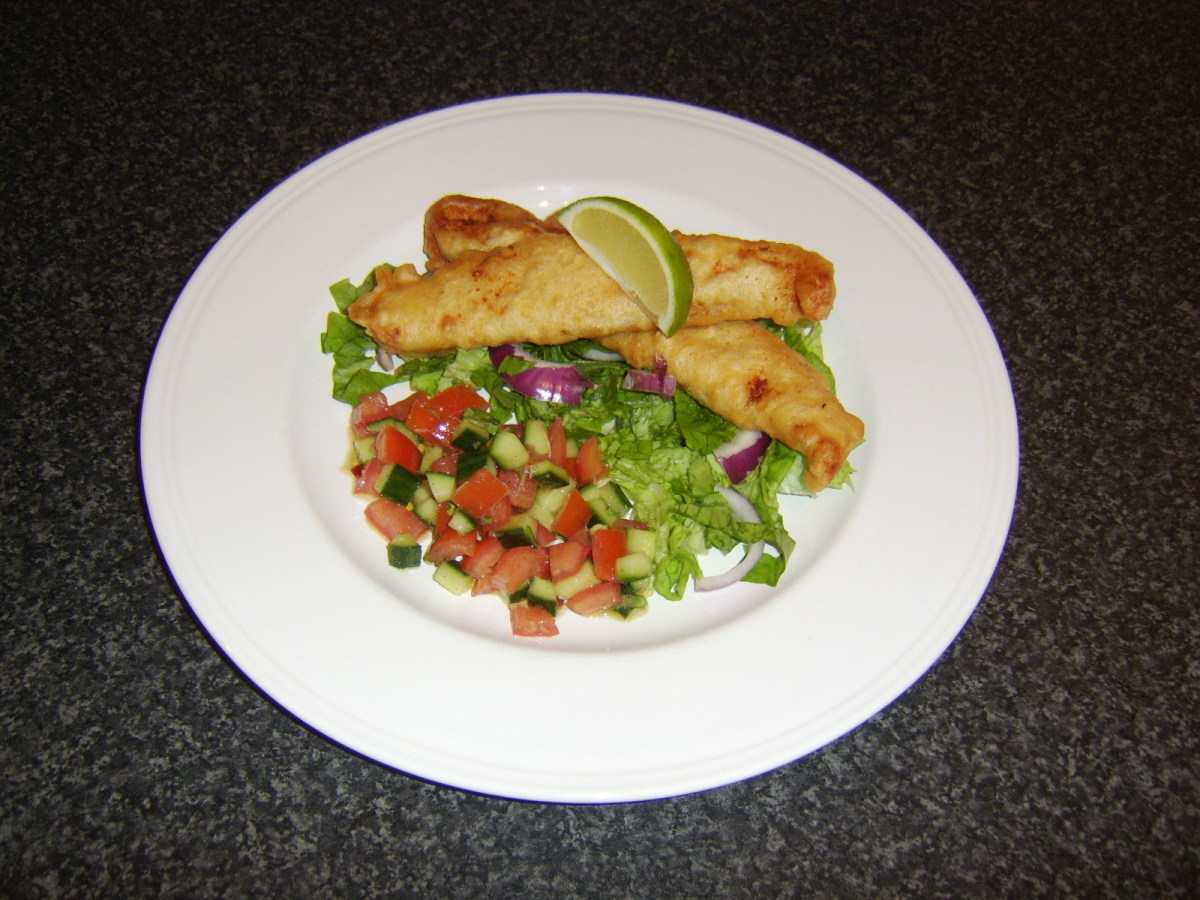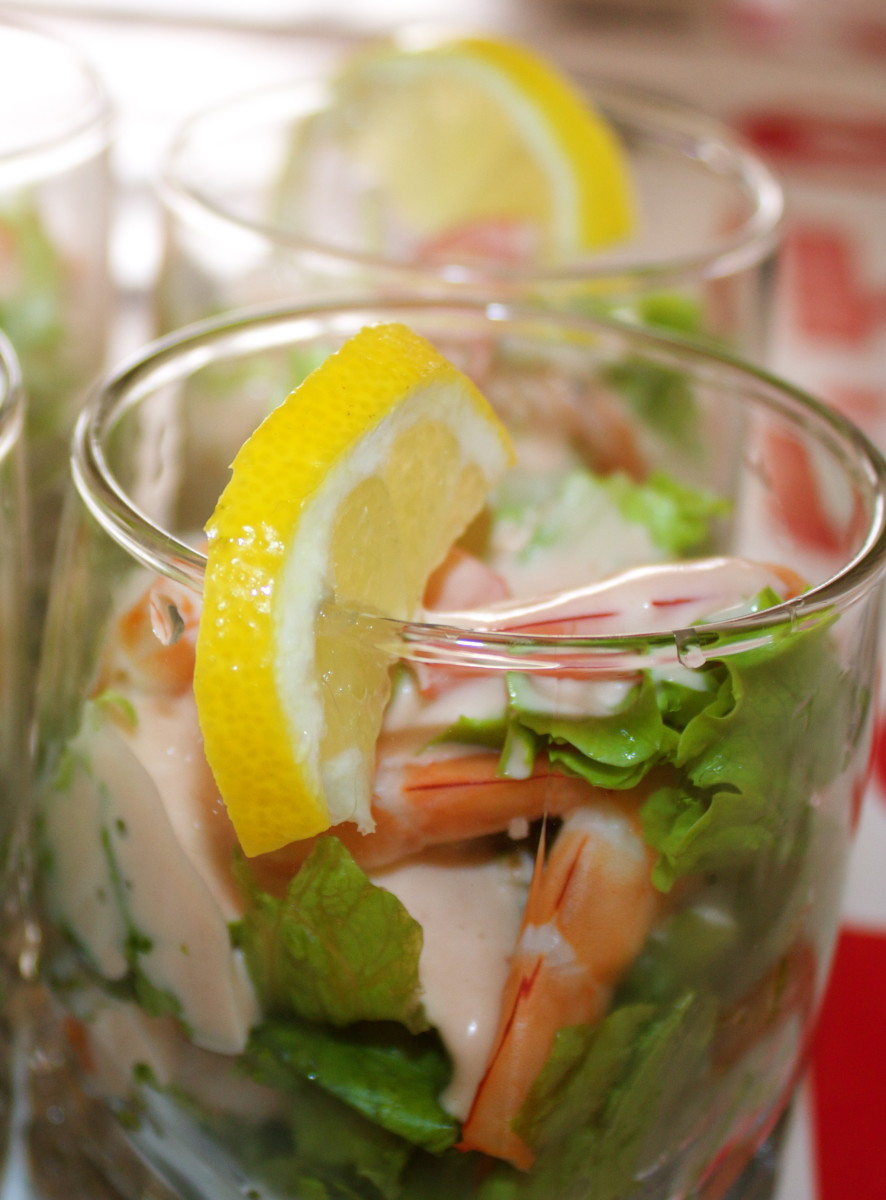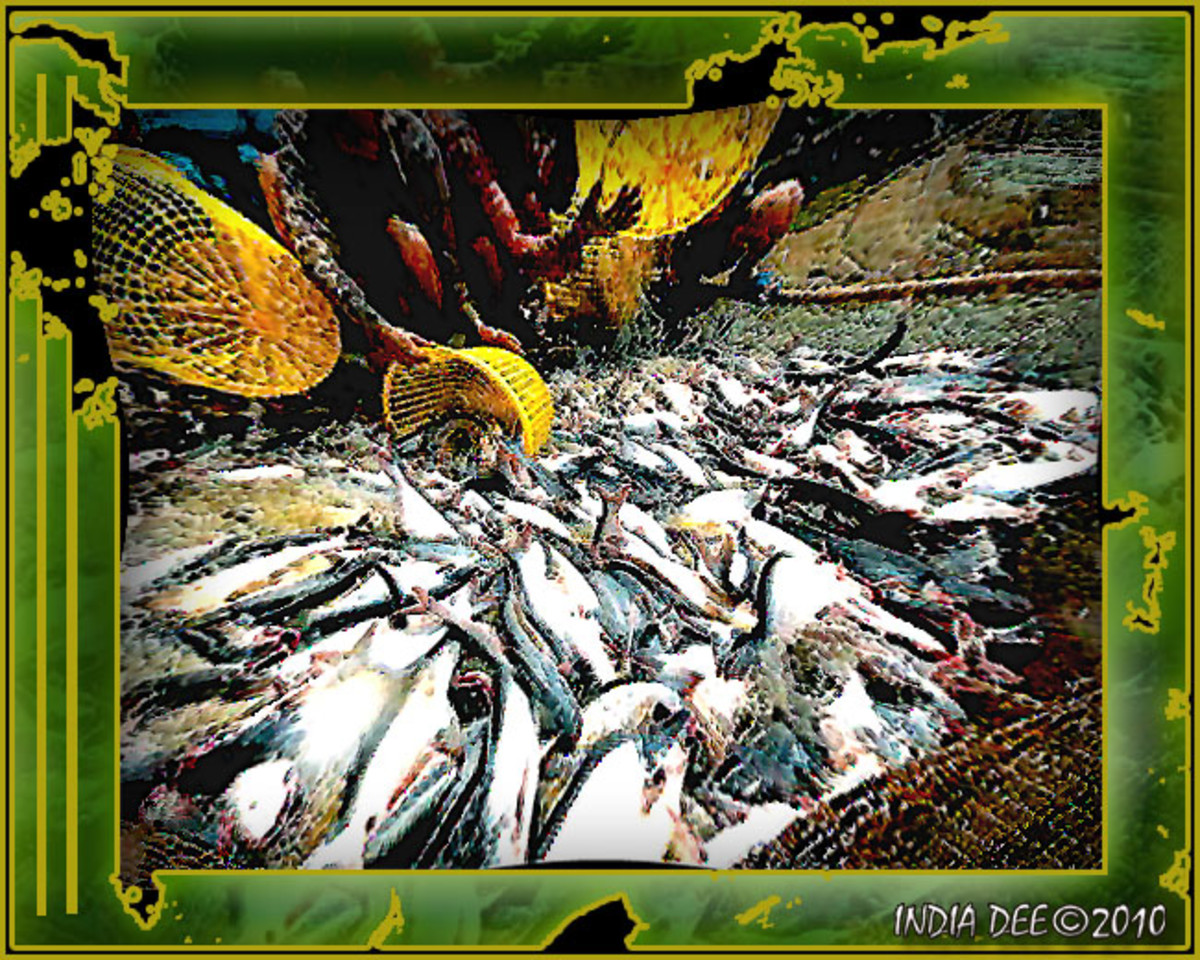Preparing Fish
Fish
Preparing Fish
Fish is a great source of essential fatty acids including omega-3 and omega-6, which in turn are vital for healthy function of the circulatory, gastrointestinal, cardiovascular and neurological systems. As well as being a good source of protein, fish contain significant amounts of essential amino acids, A, B and D vitamins, calcium, phosphorous, iron, copper, selenium and in salt water fish, iodine.

How to Choose fresh fish
- Fish should smell fresh, sea-salty, not fishy
- Firm and plump to touch, not soft and flabby
- The eyes should be bright and prominent
- Scales should be plentiful
- Gills should be red, except in herring where redness denotes staleness
- Colours of spots on plaice should be bright. Herrings and white fish – silvery.
Try to choose that are in season in your area. They are normally cheaper, have better quality and flavour.
Avoid damaged fish.
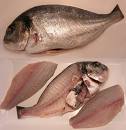
Getting your fish ready
Salt fish; soak for a short time in cold water, changing the water frequently to remove the salt
Frozen fish; thaw out in a warm atmosphere, not too quickly.
Frozen fish has less nutritional value than fresh fish owing to the fact that the ice cuts into the fibres and there is a loss of soluble protein during defrosting.
General Method of Preparation
1. Wash under cold running water, do not leave to soak as this allows soluble nutrients to be lost.
2. Cut off the tail and fins, then scale. This is better done if placed on paper so that any scales that may fly off settle on the paper. Use the head and tail of the fish to make stock.
3. Wash in cold water, rubbing on salt to remove dark skin or blood. Dry in a clean cloth.
Filleting Fish
Round fish
Cut down the centre of the backbone with a sharp knife. Starting from the bone remove the flesh all the way round. Two fillets are obtained from round fish.
Flat fish
· Cut down the centre backbone from head to tail
· With a sharp knife carefully remove the flesh from either side of the backbone, leaving it clean. Proceed to work on the outer edge.
· Turn the fish over and fillet the other side in the same manner thereby obtaining four fillets of fish.
Skinning fish
Place the fish on a board. Using a sharp knife and starting at the tail end, cut through the flesh. Keep the knife slanting with the blade on the skin and with a sawing movement ease the flesh off the skin, rolling the flesh away from the body. Dipping fingers in salt helps prevent slipping.
Methods of cooking fish
BAKING
Baked fish must be cooked in a moderate oven, in a baking tin, and basted carefully with hot fat occasionally. Alternatively, place on a greased baking tin, season with salt, pepper and lemon juice and cover with greased paper. Allow 20 minutes for thin fillets, and for thicker cuts, allow 15 minutes to pound and 15 minutes over.
STEAMING
- 1. Bring water in steamer or pan to boiling point, meanwhile prepare the fish. Sprinkle with lemon juice, salt and pepper.
- 2. Wrap fish in greased paper; place in steamer or between two greased plates on top of a pan. A little margarine or milk may be put with fish if latter method is used. In both cases, keep water boiling throughout, if necessary adding more boiling water occasionally.
- 3. Fillets 15 – 20 minutes according to thickness. For salmon steak or middle cuts of fish, allow 30 minutes plus 5 minutes per pound.
Boiling Fish
Remember that fish must be cooked at a lower temperature than most other food, because the flesh is delicate and easily burnt or broken by great heat.
The water in the fish kettle or pan in which the fish is to be cooked, must be brought to boil, and salt and a few drops of lemon juice or a tablespoon of vinegar added.
The acid is needed to keep the flesh white and firm.
As soon as the fish is put in, the pan should be moved to a cooler heat, so that fish starts off by simmering gently till the flesh looks white and flaky, and comes away from the bone easily.
About 7 or 8 minutes to every pound and 7 minutes over is the time usually allowed but a little longer will be needed for a thick, fleshy fish.
STEWING
Cook as for ordinary stews, using milk.
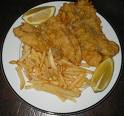
Frying Fish
Both deep and shallow methods can be used when frying fish.
Shallow frying
- 1. Wash and dry the fish, dip in seasoned flour or eggs and crumbs. Toss gently to remove any surplus coating.
- 2. Heat a small amount of margarine or oil in a frying pan until a blue haze appears. Only enough fat should be used to cover the base of the pan. Take pan off heat or move to a cooler ring on your cooker, place fish in pan, turning it over when well browned on the first side. By the time both sides are nicely browned the fish should be cooked through.
This is a suitable method for herrings, mackerel, smelts, sole, plaice, hake or cod steak, trout.
Deep frying
- 1. Use a deep frying pan fitted with wire basket and lid. Prepare the fish and dry in a cloth.
- 2. Dip into seasoned flour, then coat with egg and breadcrumbs or dip into batter.
- 3. Heat fat until a blue haze appears. If fish is coated with egg and crumbs place in a frying basket, lower gently into hot fat. If fish is coated with batter, drop a little batter into fat to make sure it is hot enough. Do not use wire basket as batter sticks to it. A wire spoon is useful when using fish coated with batter, for turning and lifting the fish.
- 4. Do not fry too much fish together.
- 5. Lift the fish out and drain well.
- 6. Garnish with lemon and friedparsley, and sauce being served separately.
To fry in salt
This method is particularly suitable for herrings, which contain sufficient oil to fry it without any other fat being added. Use a thick based frying pan, and sprinkle it with salt.
Heat it up very slowly, and when the pan is hot, put in the scaled, cleaned, and dried herrings.
Fry on each side for 4 – 5 minutes until golden brown and crisp.
Grilling Fish
Fillets of fish should be greased, and placed on a grid stand in a baking tin.
Cook for 5 – 10 minutes, turn fillets over, dredge lightly with seasoned flour, put a few dabs of butter on top and replace under grill to brown and cook.
STUFFED FISH
1. Temperature 350F
2. Prepare the fish and stuff.
Fillets of fish can be rolled round small quantities of stuffing,steaks of fish may be boned and the hole filled with stuffing.
Place in a baking tin, pour a little stock or milk over the fish, cover with greaseproof paper.
Allow the same time and temperature as for baking plain fish. Use liquid remaining after cooking for sauce.


